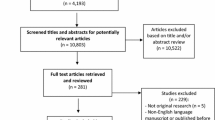Abstract
Restrictive reimbursement policies—including those based on non-formulary drug status and prior authorizations—can create situations in which patients’ use of prescription medications is not fully captured in administrative claims data. This can create bias in drug safety studies that depend solely on these data. An analysis in two Canadian provinces found that primary administrative databases captured only 61 % of dispensations of drugs for which restrictive reimbursement policies were in place. A subsequent simulation study found that, in certain circumstances bias due to exposure misclassification resulting from restrictive reimbursement policies can be quite large in analyses comparing outcomes between drug exposure groups. Investigators need to be knowledgeable about the data they analyze and know whether restrictive reimbursement policies are in place that might affect the capture of drugs of interest. It is also critical to understand the mechanisms by which restrictive reimbursement might cause bias in claims-based drug safety studies, the direction and magnitude of the potential bias, and strategies that could be used to mitigate such bias.

Similar content being viewed by others
References
Pocock SJ, Elbourne DR. Randomized trials or observational tribulations? N Engl J Med. 2000;342:1907–9.
Suissa S, Garbe E. Primer: administrative health databases in observational studies of drug effects—advantages and disadvantages. Nat Clin Pract Rheumatol. 2007;3:725–32.
Maclure M, Schneeweiss S. Causation of bias: the episcope. Epidemiology. 2001;12:114–22.
Schneeweiss S, Avorn J. A review of uses of health care utilization databases for epidemiologic research on therapeutics. J Clin Epidemiol. 2005;58:323–37.
Choudhry NK, Shrank WH. Four-dollar generics—increased accessibility, impaired quality assurance. N Engl J Med. 2010;363:1885–7.
Jacobus S, Schneeweiss S, Chan KA. Exposure misclassification as a result of free sample drug utilization in automated claims databases and its effect on a pharmacoepidemiology study of selective COX-2 inhibitors. Pharmacoepidemiol Drug Saf. 2004;13:695–702.
Gamble JM, Johnson JA, Majumdar SR, McAlister FA, Simpson SH, Eurich DT. Evaluating the introduction of a computerized prior-authorization system on the completeness of drug exposure data. Pharmacoepidemiol Drug Saf. 2013;22:551–5.
Huskamp HA, Stevenson DG, Donohue JM, Newhouse JP, Keating NL. Coverage and prior authorization of psychotropic drugs after Medicare Part D. Pyschiatric Serv. 2007;58:308–10.
Gleason PP, Phillips J, Fenrick BA, Delgado-Riley A, Starner CI. Dalfampridine prior authorization program: a cohort study. J Manag Care Pharm. 2013;19:18–25.
Jackevicius CA, Tu JV, Demers V, et al. Cardiovascular outcomes after a change in prescription policy for clopidogrel. N Engl J Med. 2008;359:1802–10.
Keast SL, Thompson D, Farmer K, Smith M, Nesser N, Harrison D. Impact of a prior authorization policy for montelukast on clinical outcomes for asthma and allergic rhinitis among children and adolescents in a state Medicaid program. J ManagCare Pharm. 2014;20:612–21.
Gamble JM, McAlister FA, Johnson JA, Eurich DT. Restrictive drug coverage policies can induce substantial drug exposure misclassification in pharmacoepidemiologic studies. Clin Ther. 2012;34(1379–86):e3.
Solberg LI, Engebretson KI, Sperl-Hillen JM, Hroscikoski MC, O’Connor PJ. Are claims data accurate enough to identify patients for performance measures or quality improvement? The case of diabetes, heart disease, and depression. Am J Med Qual. 2006;21:238–45.
Brunelli SM, Gagne JJ, Huybrechts KF, Wang SV, Patrick AR, Rothman KJ, Seeger JD. Estimation using all available covariate information versus a fixed look-back window for dichotomous covariates. Pharmacoepidemiol Drug Saf. 2013;22:542–50.
Gamble JM, McAlister FA, Johnson JA, Eurich DT. Quantifying the impact of drug exposure misclassification due to restrictive drug coverage in administrative databases: a simulation cohort study. Value Health. 2012;15:191–7.
Johnson JA, Majumdar SR, Simpson SH, Toth EL. Decreased mortality associated with the use of metformin compared with sulfonylurea monotherapy in type 2 diabetes. Diabetes Care. 2002;25:2244–8.
Lash TL, Fox MP, Fink AK. Applying quantitative bias analysis to epidemiologic data. New York: Springer Science + Business Media; 2009.
Acknowledgments
No funding was used in the preparation of this article. Joshua Gagne has no conflicts of interest that are relevant to the content of this article.
Author information
Authors and Affiliations
Corresponding author
Rights and permissions
About this article
Cite this article
Gagne, J.J. Restrictive Reimbursement Policies: Bias Implications for Claims-Based Drug Safety Studies. Drug Saf 37, 771–776 (2014). https://doi.org/10.1007/s40264-014-0220-5
Published:
Issue Date:
DOI: https://doi.org/10.1007/s40264-014-0220-5



